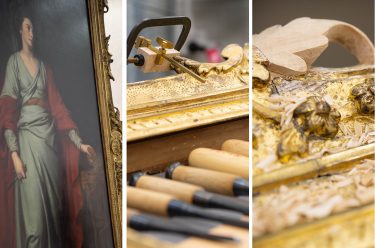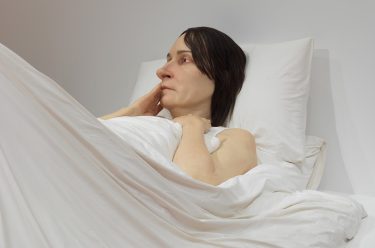QAGOMA’s well equipped frame studio is unique to any public art museum in Australia, producing all the gallery’s framing needs as well as carrying out conservation and restoration treatments. Go behind-the-scenes with Linda Nathan from Australian Wood Review as she delves into the daily routine of studio life.
The Conservation Frames and Furniture Studio at Queensland Art Gallery | Gallery of Modern Art (QAGOMA) must surely rank as one of the most well equipped workshops around. Everything from a dental probe through to a suite of Martin machinery not to mention a Marunaka surface planer have a home there, and are lovingly used and maintained by the studio’s tightknit team of three.
The studio’s well appointed machine room leads into a long bench room which doubles as space for conservation and restoration treatments, traditional frame making and assembly. Further along, a glass walled office is used for administrative tasks and for housing reference books.
The Conservation Frames and Furniture Studio team
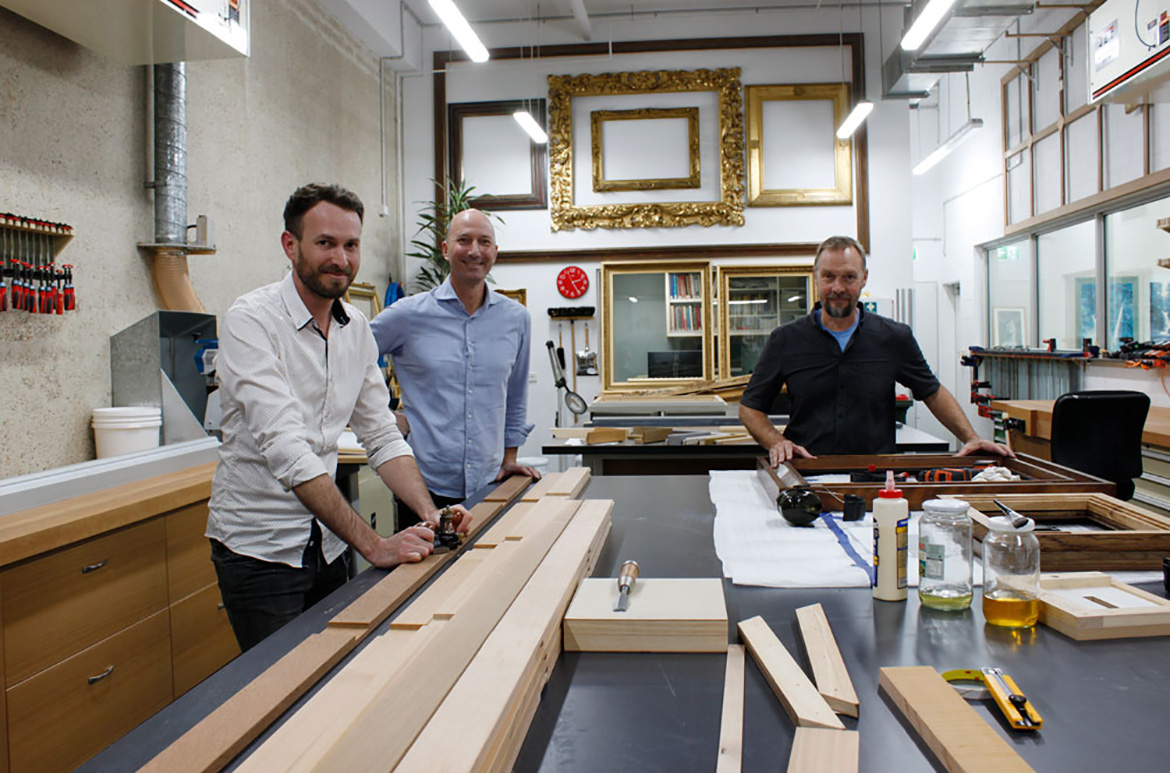
Conservation framer, cabinetmaker and studio manager Robert Zilli came to the gallery as a volunteer in 1993. Following two year’s study in furniture restoration in Italy he was offered a traineeship under Paul Curson, then manager of the studio. Committed to furthering his knowledge and skills, Robert received an ISSI Fellowship in conservation gilding (Chicago, 2008), and later a Churchill Fellowship for which he studied traditional framing at The National Gallery in London in 2015.
Damian Buckley is a conservation framing technician and certified cabinetmaker who is also an accomplished visual artist with an education degree majoring in painting and sculpture. Damian’s work extends to the conservation and restoration of picture frames and furniture, as well as manufacturing replica period and custom picture frames. He has worked in the studio for 15 years.
The team is complete with its newest member, Alex Forrest, conservation workshop technician. Like Damian, Alex has a fine art background but with a degree majoring in jewellery and small objects. His interest in woodworking developed while studying at Queensland College of Art. Later experience working at a commercial framers and then as a technician for artists prepared him for gallery work.
The view into the restoration and assembly room
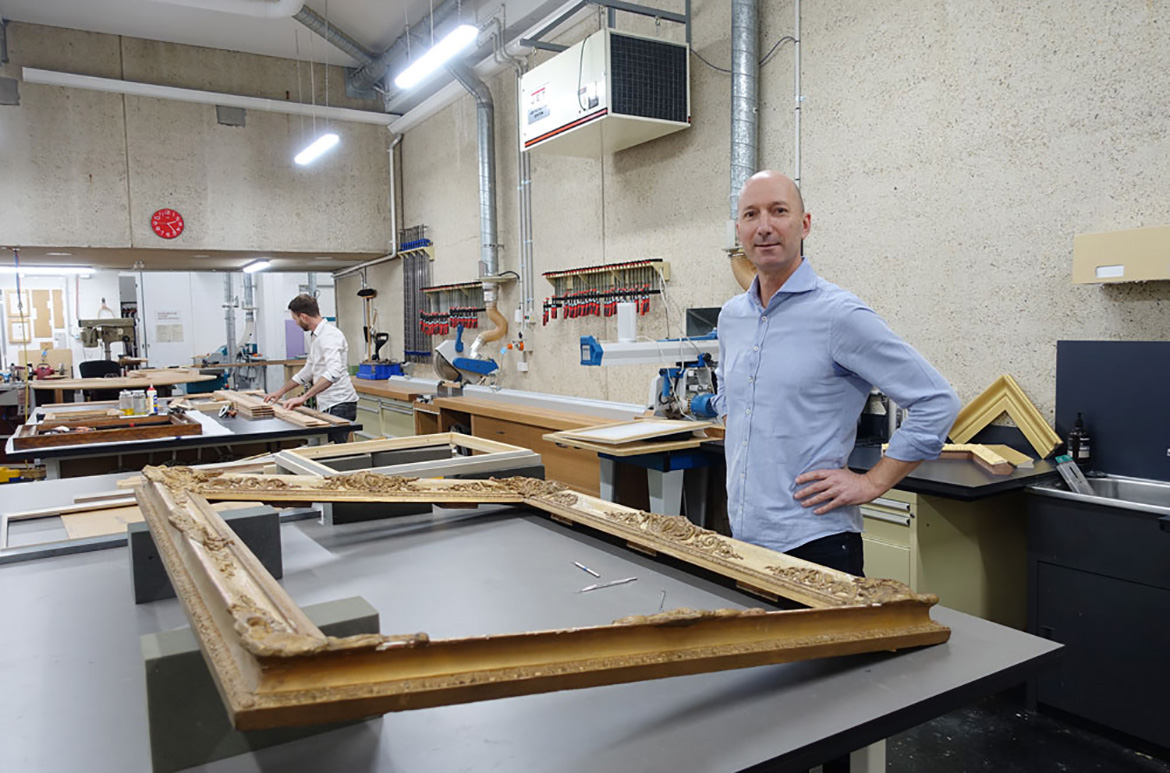
The studio is located within the labyrinthe of service and storage areas that exist behind gallery display areas. Weaving through hallways leads to a loading dock and a floor to ceiling timber storage area populated with species that mostly pertain to making frames, but also to furniture restoration. Australian natives dominate and include red cedar, Qld white beech, blackwood, hoop and bunya pines.
QAGOMA’s frame studio is unique to any public art museum in Australia and manufactures all its own canvas stretcher bars, standard works on paper frames, custom frames and replica frames for the gallery’s collection. In-house capacity means quality can be assured, deadlines met and modifications made where required.
Frames for works on paper are made from native and imported timbers chosen for their sustainability, appearance, affordability and certification. Western red cedar is used for stretcher bars but due to rising costs the gallery is trialling the use of paulownia. Paulownia has a very high strength to weight ratio, fine straight grain and is dimensionally stable – all essential attributes for the timber required to make stretcher bars.
In recent years gallery funding has made it possible to acquire specific purpose machinery such as the German-made Stegherr stretcher bar milling machine. Replacing several operations on the spindle moulder, this machine cuts double mitred bridle joints in the one operation, a pair at a time. Machines like these speed processes, guarantee accurate joinery and offer reliable operation for decades.
Studio machines

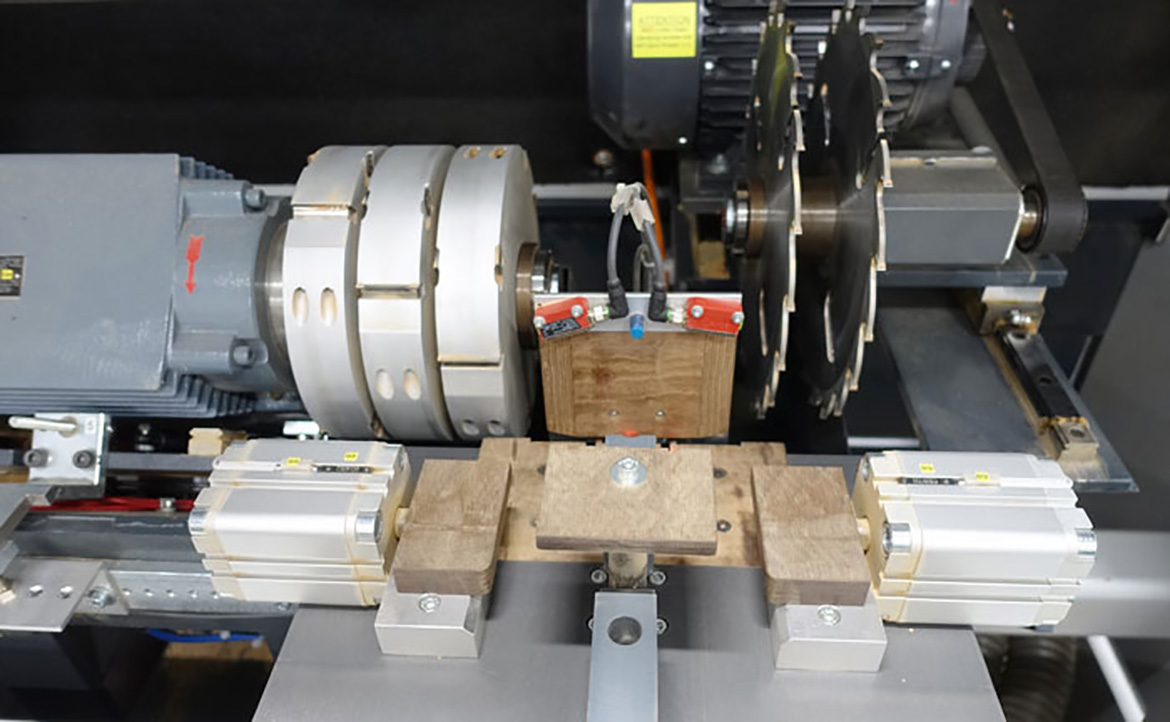
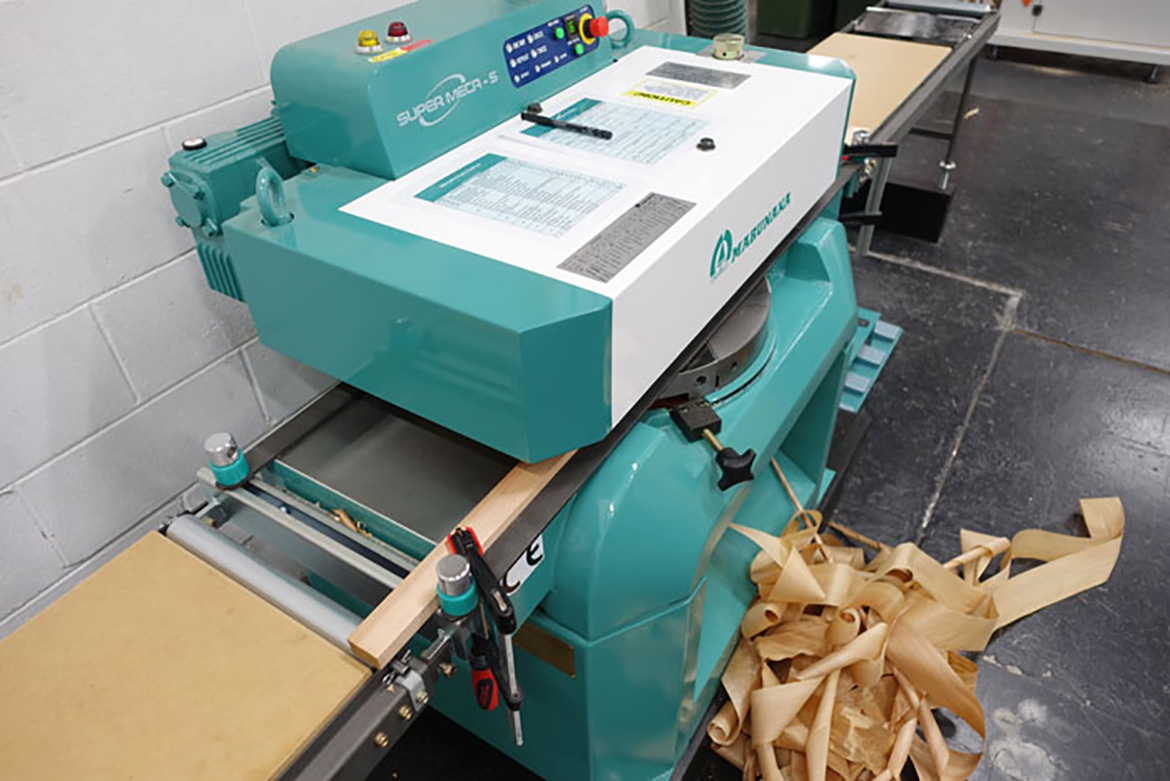
Dust is the enemy of conservation framing and is minimised with a custom designed overhead collection system. The Marunaka surface planer was acquired to cut down on manual sanding as it produces fine knife-finished surfaces.
In the studio, period frames undergo conservation and restoration treatments and the team adheres to the Australian Institute for the Conservation of Cultural Materials (AICCM) code of ethics and practice.
Treatments can take months, commencing with a thorough examination of the object to determine the most suitable approach. Preventive treatments see modifications made to the backs of frames to accommodate glazing, hanging hardware and backing boards. Prior to commencing work on replica frames and in consultation with curators, in-depth research is undertaken by the studio team to ensure the most historically accurate frame style is chosen.
Furniture in collection storage

Schulim Krimper ‘Sideboard’
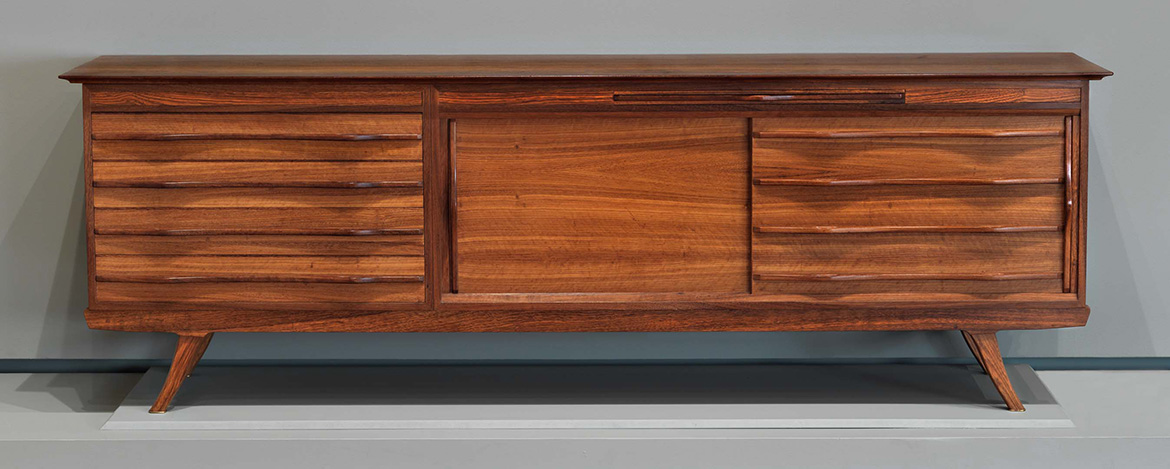
John Merten, Cabinetmaker; L.J. Harvey, Carver ‘Hallstand’
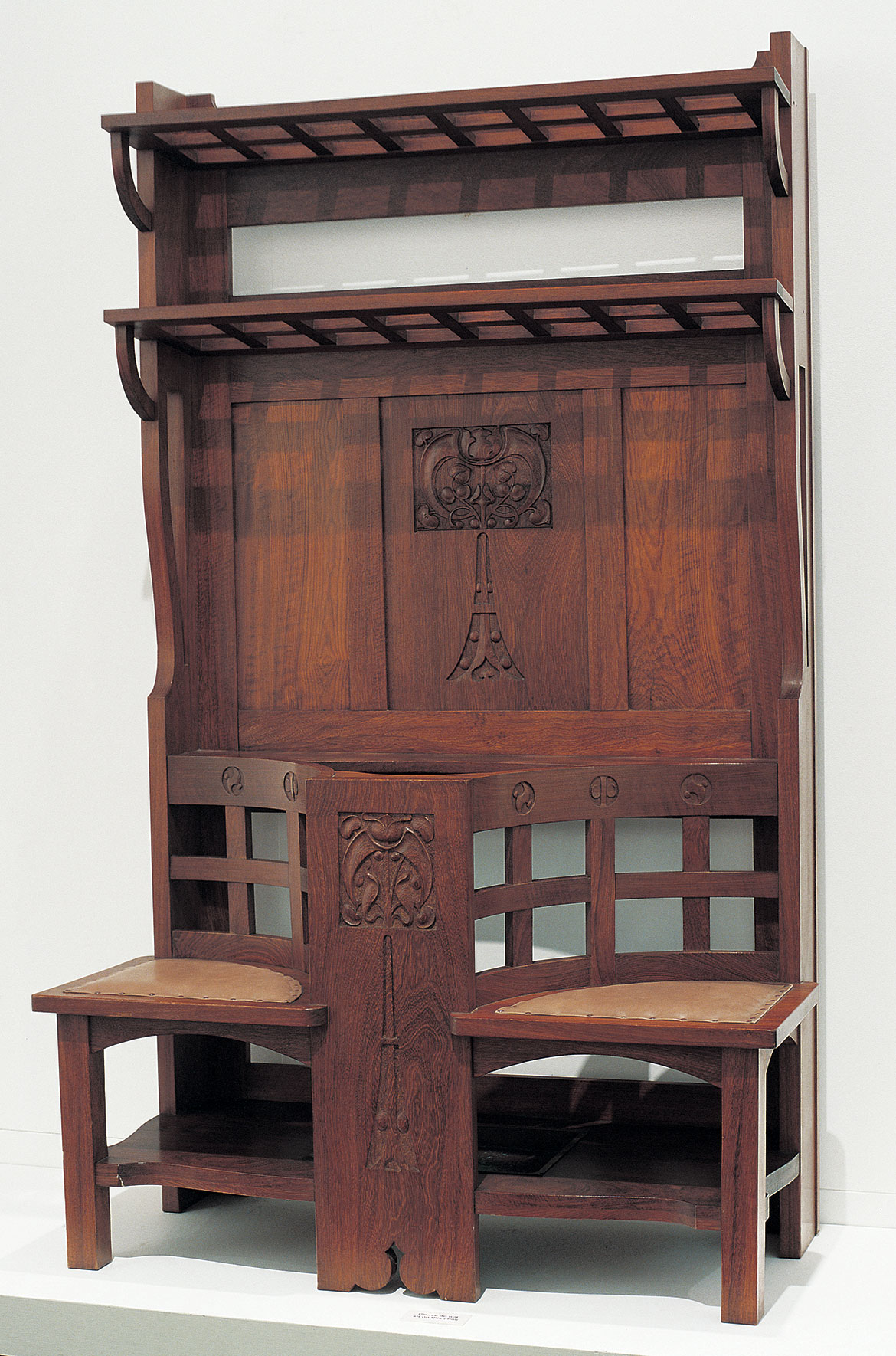
As with artworks, the QAGOMA furniture collection is displayed in rotation. A recent upgrade to storage facilities has seen a rehousing of the growing collection in floor to ceiling racking systems. Spotted while wandering through were Tony Kenway chairs, Robert Dunlop’s Rocking in Free Form chair, a sideboard by Shulim Krimper, a hallstand by John Merten and L.J. Harvey, and carved work by Elvin Harvey, to name just some of the treasures within.
The same conservation ethics are employed when conserving furniture in the gallery’s collection. The aim is to preserve and protect original surfaces and structures using a combination of traditional and contemporary materials that have been tested for long-term stability and reversibility in the future.
Every element of the studio speaks of attention to detail and carefully managed activity. Robert Zilli sums it up: ‘There are always challenges, always something new to solve, and of course there are deadlines to be met.’
Linda Nathan is editor of Australian Wood Review, Australia’s premier woodworking and woodcraft magazine that focuses on fine furniture making, woodturning, carving, timbers, tools and machinery. Extract from ‘Preserving Our Past’, Issue 105, November 2019.
Feature image: Frame restoration work can start at virtually microscopic level, in this instance with a dental probe / Photograph: Raf Nathan
#QAGOMA

